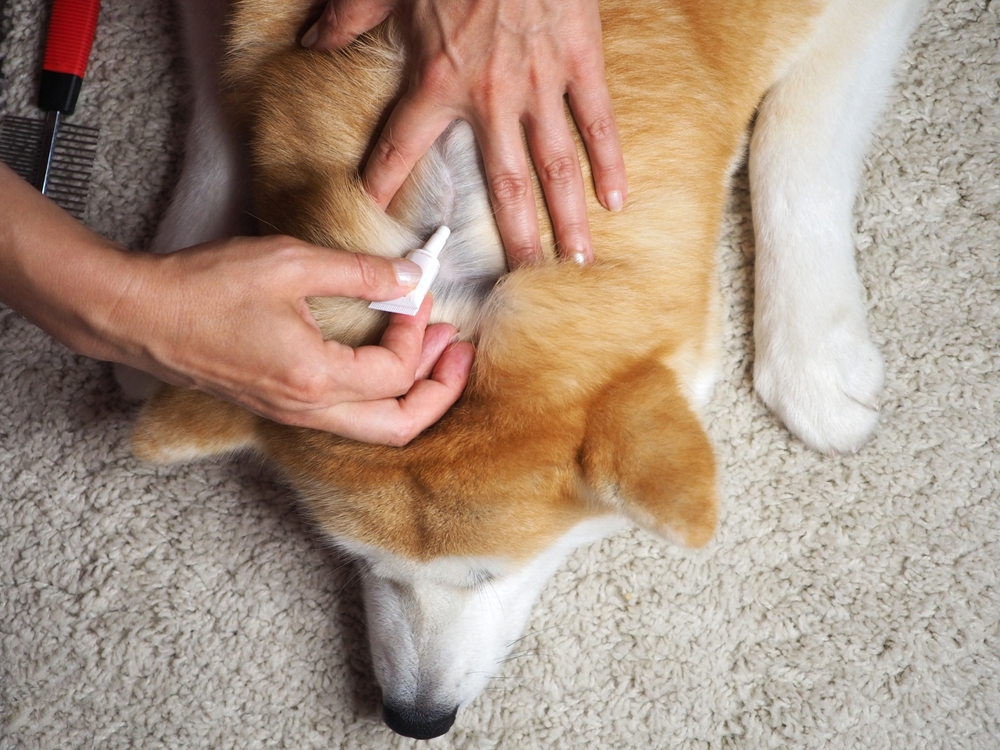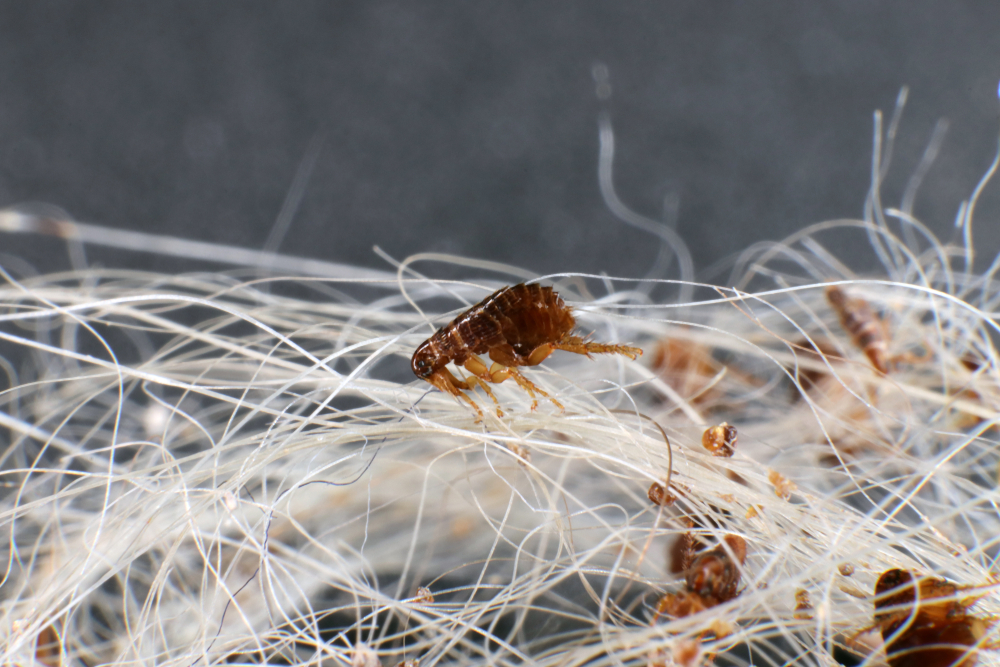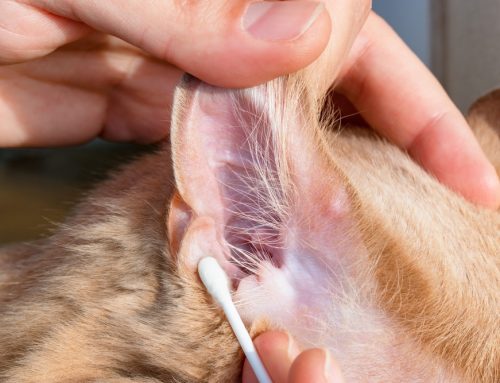Flea and tick season is here, and with spring rains and warmer weather, you need to be aware of the health problems these tiny pests can cause pets and people alike. Flea and tick bites are annoying but can also cause disease, serious skin problems, and infections. Fortunately, flea and tick prevention is safe, effective, and easy to administer and track. This simple monthly task can help improve your pet’s quality of life and ensure they avoid parasitic diseases. Our South Shores Pet Clinic team provides essential information about how fleas and ticks can affect your pet’s health and ways to protect them from disease.
Fleas and your pet
Fleas are tiny, parasitic creatures that live on mammals’ skin and fur. They reproduce quickly, with one female producing 50 eggs daily. Therefore, a flea infestation can develop rapidly. Once established, fleas are challenging to eliminate from your home and your pet’s fur and skin. Strategies include daily washing of pet bedding, vacuuming, and administering a monthly preventive to all household pets.
Flea bites cause pets to be itchy and uncomfortable, but fleas can also cause additional problems. Consider how fleas can affect your pet:
- Flea allergy dermatitis (FAD) — Some pets are allergic to the protein in flea saliva and have an extreme allergic response to even one flea bite. These pets are intensely itchy at the base of the tail and will scratch nonstop, causing secondary skin problems such as inflamed, red skin, hot spots, hair loss, and infections.
- Flea anemia — A severe flea infestation can cause blood loss and even anemia since fleas feed on pets’ blood. A flea infestation is especially concerning for kittens’, puppies’, and small pets’ health.
- Tapeworm infestation — Fleas harbor certain tapeworm larvae species. If your pet ingests fleas while grooming, tapeworms take up residence in your four-legged friend’s digestive tract. The tapeworms are not usually harmful, but segments can appear in pets’ stools and around the house.
- Bartonella — Bartonella bacteria can be transmitted to pets or people through flea bites or cat scratches. This disease causes fever and swollen lymph nodes, requiring medical care.
Ticks and your pet
Ticks are not insects but arachnids closely resembling spiders. Ticks can and do survive in every U.S. state. They go dormant when the temperature drops but can awaken on a mild day, so you must ensure you administer your pet’s tick preventives year-round. Ticks must feed to molt and mate, and their bites are irritating and painful. The real danger, however, lies in the tick-borne diseases they can transmit. These diseases are often difficult to diagnose and can cause pets and people to become severely ill. Tick-borne diseases include:
- Lyme disease — The bacteria that cause Lyme disease, transmitted by the deer tick (also called the black-legged tick) and the Western black-legged tick, can cause joint stiffness and pain, appetite loss, fever, and fatigue. Lyme disease signs may not appear until months after the tick bite. The telltale “bullseye” that people get on their skin does not occur in dogs.
- Rocky Mountain spotted fever — Despite its name, this disease is found throughout North America. This infection can cause fever, skin lesions, joint stiffness, and neurologic problems and may be life-threatening if not diagnosed and treated quickly.
- Ehrlichiosis — Canine ehrlichiosis is caused by the brown dog tick and has different forms, often regional. The disease, caused by the bacteria a tick’s bite transmits, can affect dogs, cats, and people. Ehrlichiosis signs include fever, appetite loss, swollen limbs, nose bleeds, and weight loss.
- Babesiosis — Babesiosis bacteria cause anemia, and the disease is transmitted by brown and American dog ticks. Signs include pale gums, weakness, and vomiting.
- Anaplasmosis — Canine anaplasmosis comes in two forms. Anaplasma phagocytophilum is a white blood cell infection transmitted by deer and Western black-legged ticks. This form is zoonotic, which means pets can transmit the disease to people. The other form, Anaplasma platys, is transmitted by the brown dog tick and affects the blood platelets, causing a bleeding disorder. Lethargy, bruising, and nosebleeds are signs.
Flea and tick prevention in pets

Preventing fleas and ticks from bothering your pet is crucial to help them avoid certain infectious diseases. To safeguard your pet from fleas and ticks, follow these tips:
- Administer preventives year-round — Many safe, effective, and easy-to-administer flea and tick preventives are available. Monthly products must be applied year-round and on schedule to be effective. Topical, injectable, and oral preventives are also available.
- Perform tick and flea checks — Regularly check your pet’s skin and coat for parasites and remove them if they are present. Finding ticks as soon as they bite is significant since many diseases cannot be transmitted until the tick has been attached to your pet for at least 36 to 48 hours. The attachment time amount differs for each parasitic disease type. A flea comb is remarkably effective at removing adult fleas but won’t prevent eggs from hatching on your pet’s skin.
- Keep pets away from flea and tick habitats — Keeping your yard free of overgrown weeds and brush, yard debris piles, and other parasite habitats can help control the flea and tick populations around your home. In addition, you should erect fencing around your yard to keep wildlife out because they carry fleas and ticks.
Fleas and ticks are annoying for your pet and negatively impact their long-term health. By safeguarding your furry pal from fleas and ticks, you help protect your pet against the discomfort and serious diseases these parasites can transmit. Our South Shores Pet Clinic team cares about your pet’s health, so talk with us to learn more information about flea and tick dangers and schedule an appointment so we can prescribe the most effective parasite preventives for your pet.







Leave A Comment